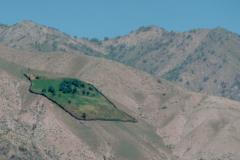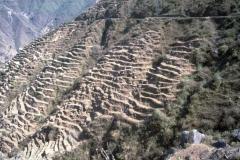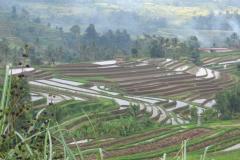Land Degradation and Conservation
Ever-increasing demands on the land from economic development, burgeoning cities and growing rural populations are driving unprecedented land use change. In turn, land use change is driving land degradation: soil erosion, nutrient depletion, salinity, water scarcity, pollution, disruption of biological cycles, and loss of biodiversity. This affects peoples' livelihoods, by threatening their food and water supply, lowering the quality of their living environment, decreasing biodiversity, etc. To address these challenges, Sustainable Land Management offers a range of interventions to prevent or reduce land degradation.
The concept of Land Degradation has evolved over time and its focus shifted from production-oriented to the broader scope of impact on ecosystems. There has also been a shift in focus from soil degradation (such as covered by the GLASOD, ASSOD and SOVEUR projects) to land degradation (e.g. GLADA), the latter including more biophysical elements such as water, vegetation, animals and men. However, soils play an important role in land degradation and conservation as they directly influence other “land” elements such as vegetation (through supplying nutrients and plant available moisture) and water (buffering and filtering function), and through these men and animals.
The term Conservation refers to efforts to combat or prevent degradation. It is now mostly captured by the term Sustainable Land Management (SLM), defined as:
“The use of land resources, (...) for the production of goods to meet changing human needs, while simultaneously ensuring the long-term productive potential of these resources and ensuring their environmental functions” (WOCAT, 2007).
SLM covers a wide range of possible interventions, related to improved management of crops, soil, animals or water (and often a combination of these) aimed at the reduction or prevention of degradation impacts. Many of these interventions are described in a global database on Technologies developed by the World Overview of Conservation Approaches and Technologies programme (WOCAT).
Besides these practices implemented in the field it is important to consider the enabling environment and the strategy to successfully implement them. This is captured in the WOCAT “Approach” database.
An example of such an “approach” is the concept of Green Water Credits, where upstream farmers are compensated by downstream water users for their SLM interventions that improve downstream water quality and quantity, besides the direct on-site benefits.


